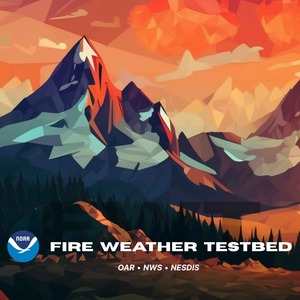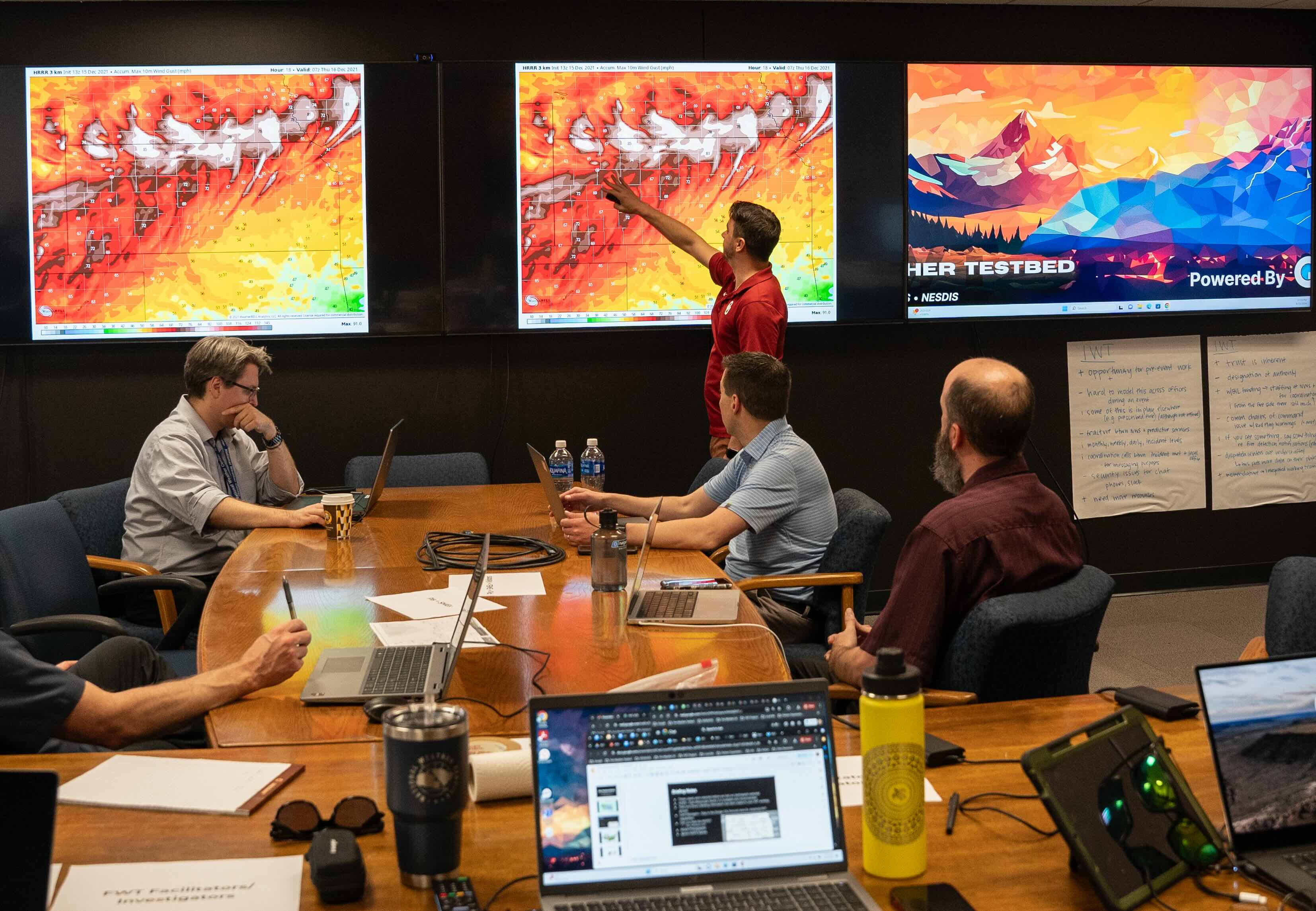June Fire Weather Testbed Evaluations

 NOAA Global Systems Laboratory hosted the first in-person evaluation in the new NOAA Fire Weather Testbed (FWT) in June. Forecasters from NOAA’s National Weather Service (NWS) were paired with state forestry partners and trained on a new wildland fire detection and monitoring tool in the Next Generation Fire System (NGFS), and an experimental method for issuing Fire Warnings collaboratively between meteorologists and land managers.
NOAA Global Systems Laboratory hosted the first in-person evaluation in the new NOAA Fire Weather Testbed (FWT) in June. Forecasters from NOAA’s National Weather Service (NWS) were paired with state forestry partners and trained on a new wildland fire detection and monitoring tool in the Next Generation Fire System (NGFS), and an experimental method for issuing Fire Warnings collaboratively between meteorologists and land managers.
“The Fire Weather Testbed aims to be an objective evaluator of new fire weather tools and technology while also assisting in the process of Operations to Research, back to Operations”, said GSL’s Zach Tolby, the Fire Weather Testbed manager.
The wildland fire detection tool is part of the satellite-based NGFS, developed by scientists at NOAA’s National Environmental Satellite Data Information Service (NESDIS), and uses artificial intelligence tools to automatically identify fire starts from the GOES geostationary satellites. When a fire or hotspot is detected, the system generates an alert that appears on a dashboard that provides quick and easy access to the satellite imagery. It allows users to filter alerts by location and fire weather conditions so decision-makers can verify the NGFS detection and determine if further action is warranted. The NGFS web interface allows for rapid sharing of satellite-derived information with partners that do not have access to NWS data assimilation systems.
Participants also evaluated the experimental NOAA National Weather Service (NWS) Integrated Warning Team (IWT) paradigm for wildland fire operations, which speeds up the exchange of fire and fire weather information between meteorologists and land managers or fire agencies that make decisions about evacuation orders. A similar approach has been used by the NWS for other hazards, but is now being adopted for tactical Fire Weather Operations.
Organizers carefully planned simulations based on real wildland fire cases. Cases were chosen based on the rapid evolution or emergence of a wildland fire that posed a threat to life and property.
After a weather and fuels briefing, NWS forecasters were allowed access to relevant archived data from GOES satellites and NGFS wildfire detection information within Advanced Weather Information Processing System (AWIPS), a system they use in operations. Forecasters were also able to access updated weather model information, including archived Warn on Forecast System (WoFS) model forecast runs. State forestry partners were given maps showing land use, fuel types, and values at risk.
NWS forecasters then evaluated updated model forecasts, observations, and satellite information to inform their forestry partners of emerging “hotspots” and potentially dangerous wildfires. They also compared the hotspot locations to nearby values at risk, estimates of fire spread, and simulated “ground reports” of ongoing fire behavior. Using this information, state foresters would then collaborate with their NWS partners to determine if the wildfire in question needed a fire warning to protect simulated life and property.
Before, during, and at the conclusion of the evaluation, social scientists at GSL administered surveys to participants to gain feedback, and conducted end-of-week focus group discussions with participants, developers, and subject matter experts. Researchers hope to gain a deeper understanding of how the NGFS and IWT frameworks could be used in real-world operations, including opportunities and barriers for implementation.
“This was a complex, end-to-end evaluation of NOAA’s new fire detection, partner collaboration, and Fire Warning tools and services,” said Tolby. “The evaluation was an overwhelming success, and we look forward to analyzing the data we gathered and providing recommendations to assist NESDIS and the NWS in deploying these new technologies and services to fire operations across the country.”
